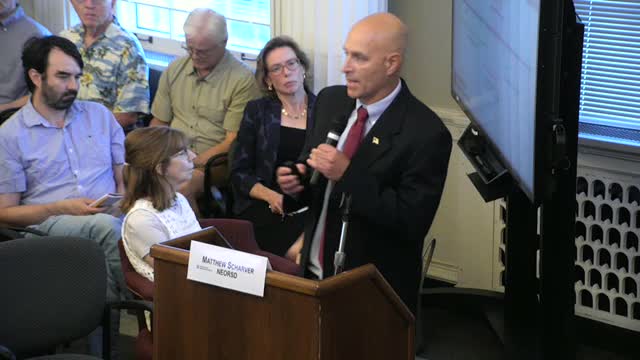Cleveland Heights and Shaker Heights Evaluate Lower Lake Dam Reconstruction or Removal
August 11, 2025 | Shaker Heights City Council, Shaker Heights, Cuyahoga County, Ohio
Thanks to https://workplace-ai.com/ , all articles about Ohio are free for you to enjoy throughout 2025!

This article was created by AI using a video recording of the meeting. It summarizes the key points discussed, but for full details and context, please refer to the video of the full meeting. Link to Full Meeting
City officials reported that the Horseshoe Lake Dam and the lake itself were deemed unnecessary for flood control, leading to a recommendation for the removal of the Lower Lake Dam and the restoration of Dome Brook in Horseshoe Lake Park. This decision is part of a broader effort to address flooding issues in University Circle, which has been identified as a low point in the watershed with significant flooding risks.
In 2021, stormwater inspection teams discovered substantial sediment buildup in the Dome Brook culvert, prompting a cleanup that improved its flood management capacity from a two-year to a ten-year service level. However, further studies indicated that additional conveyance is needed to mitigate flooding risks in University Circle, leading to the launch of a feasibility study for constructing a new culvert alongside the existing one.
The council also discussed the ongoing challenges associated with the Lower Lake Dam, classified as a Class 1 high hazard dam. The dam currently fails to meet state standards for flood control, providing only 2% of the necessary conveyance for extreme weather events. The Ohio Department of Natural Resources has given the city two options: either reconstruct the dam to meet modern standards or remove it entirely.
The pre-design report for the dam reconstruction revealed significant costs and challenges, including the need for a concrete gravity dam, auxiliary spillways, and flood walls. The council emphasized that maintaining the dam would not significantly improve flood conditions in University Circle, where flooding has previously affected buildings and transportation.
The meeting concluded with a consensus that the Lower Lake Dam is not essential for managing flooding in the broader University Circle area. The council will continue to explore options for improving flood management while considering ecological impacts and the financial implications of any proposed projects. The next steps will involve further public engagement and analysis of the feasibility study results.
Converted from Shaker Heights - Special City Council meeting on August 11, 2025
Link to Full Meeting
Comments
View full meeting
This article is based on a recent meeting—watch the full video and explore the complete transcript for deeper insights into the discussion.
View full meeting
